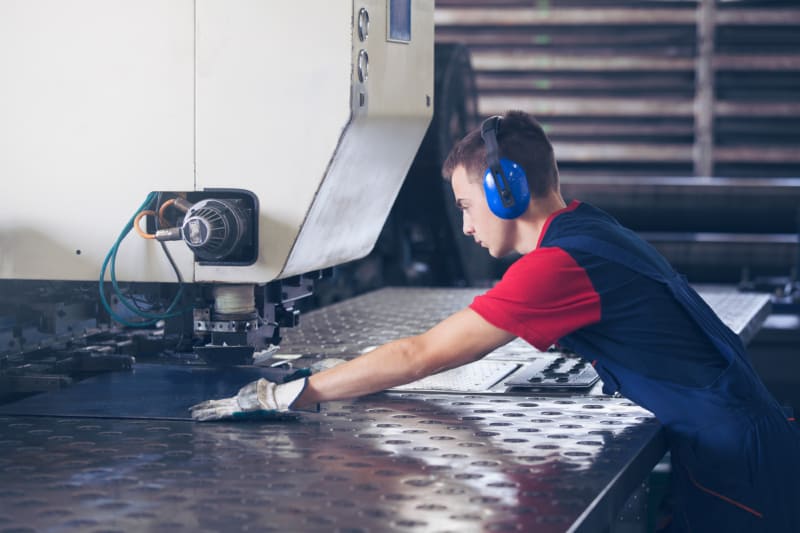What are the Different Types of Sheet Metal Processing and how are They Used

Sheet metal is a crucial part of the manufacturing industry and a fundamental material used in the construction industry too. Sheet metal is a versatile material that will often be made out of steel or aluminum and can be used for products as diverse as panels for houses for automobile components. It’s worth noting that there are numerous different types of sheet metal processing.
So what are the different types of sheet metal processing?
Fabrication
This process of sheet metal workings typically used to make metal boxes or enclosures. The sheet metal is folded up much like a cardboard box, but much stronger. The process is most commonly carried out on a Press Brake.
A machine designed specifically for the purpose. Modern versions are computer controlled (CNC) and can offer a lower cost alternative to ‘Press working’ where dedicated tooling is required. They allow complicated fabrications to be constructed with individual bent or folded components being joined together.
Punching
Through punching, the metal sheets are processed with a punch and a die. This creates holes in the sheet metal of various shapes and sizes. The sheet metal is positioned between the punch and the die before being pressed down to create the hole.
Computer controlled machines allow the position of these holes to be arranged in such a way that complex shapes can be cut from the sheet. This differs from press working where the sheet metal is ‘formed’ rather than being cut. Frequently CNC punching is used in conjunction with the Press Brake described above allowing intricate shapes to be cut before they are bent.
Hydroforming
This is one of the lesser known metal forming processes however it is still useful for certain manufacturing processes. Here, the metal sheet is stretched over a die. This process is quite similar to deep drawing.
However, one important difference is that while deep drawing requires various draw deductions hydroforming will be completed in one quick step. Only a die is required, the punch being replaced with hydraulic fluid under high pressure. This fluid forces the sheet metal into the die cavity allowing more three dimensional components to be produced.
Laser Cutting
This process of sheet metal has become far more common in recent years and is used by various companies including ourselves here at Pegrex. Here, the sheet metal is exposed to a laser. This burns holes in the metal. A key benefit of this process is that it can be incredibly precise when providing the desired results.
It can also be automated using a laser cutting machine, ensuring a rapid and efficient solution in the manufacturing industry. Laser cutting offers all the advantages of CNC punching without the need for punches and dies to cut the holes or shapes in the sheet required. In certain applications, CNC punches are more cost effective but the flexibility of laser cutting has made the machines very popular.
Spinning
Metal spinning is an old process that is still relevant today. It can only be used to manufacture cylindrical components or products. Saucepans are usually manufactured using this process due to the speed and low cost of the process.
It can be done by hand for low volume artisan type products or by machine where larger volumes of product is required. It involves are round flat blank of sheet metal revolving at high speed. This disc of sheet metal can then be drawn ver a spinning mandrel in such a way that the metal appears to flow and form over the mandrel.
Press working
Again, this is process has been used for a long time. Car body panels are traditionally made by press work. However, it can also be used for many small components as well. Tooling is required in the form of a punch and die.
The punch is used to force the sheet metal into the die. This means that for most press work applications dedicated tooling is required which presents an initial cost before production can commence. However, once in place pressworking offers a low cost high volume production method for manufacturing complex parts.
As you can see, there are numerous sheet metal processes and they can all be used in a variety of different ways. The sheet metal process chosen will largely depend on the goals of the manufacturer and how the material is going to be utilised.
Are you looking for sheet metal processing near you? If so, then Pegrex can help. We engineer precision solutions directly from silver metal to meet your specifications. Get in touch today at +44(0) 121 511 1475 or email us at info@pegrex.co.uk.
